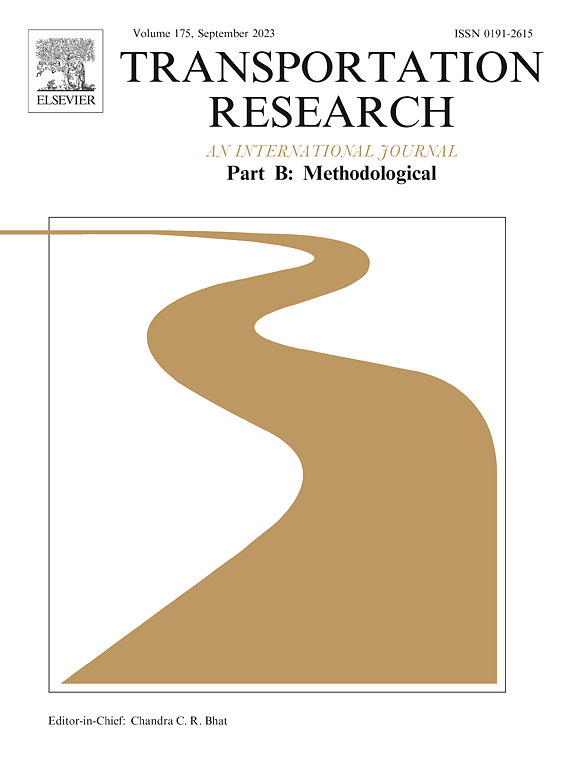Contract design for BOT roads in the presence of autonomous vehicles
IF 6.3
1区 工程技术
Q1 ECONOMICS
引用次数: 0
Abstract
This paper examines contract design for Build-Operate-Transfer (BOT) road projects in the presence of autonomous vehicles (AVs). We incorporate the impact of AVs on expanding road capacity through their platooning effect, whereby AVs travel in coordinated fleets with reduced headways. We derive the first-best BOT contracts under two distinct traffic management policies: the integrated policy, in which AVs and human-driven vehicles (HVs) share lanes, and the designated-lane policy, in which AVs and HVs use separate lanes. We also characterize the firm’s optimal BOT contracts under each policy. Our results show that under the integrated policy, AVs may be charged a negative toll when their market share is sufficiently small and headways involving AVs are sufficiently reduced, while HVs are consistently charged a positive toll under both policies. We further demonstrate that first-best BOT contracts can be implemented under both policies with the support of government subsidies. In comparing the two policies under BOT contract, we find that the integrated policy outperforms the designated-lane policy in terms of firm profit and social welfare when the AV market share is either very low or very high. Finally, we show how lane capacity allocation under the designated-lane policy affects the policy preferences of both the government and the firm.
自动驾驶汽车存在时BOT道路的契约设计
本文研究了在自动驾驶汽车(AVs)存在的情况下,建设-运营-转让(BOT)道路项目的合同设计。我们通过自动驾驶汽车的队列效应,将自动驾驶汽车对扩大道路容量的影响纳入其中,即自动驾驶汽车以协调的车队行驶,减少了行驶速度。我们在两种不同的交通管理策略下推导出最优BOT契约:自动驾驶汽车和人类驾驶汽车共享车道的综合策略,以及自动驾驶汽车和人类驾驶汽车使用单独车道的指定车道策略。我们还描述了在每种政策下公司的最优BOT合同。我们的研究结果表明,在综合政策下,当自动驾驶汽车的市场份额足够小且涉及自动驾驶汽车的路况足够少时,自动驾驶汽车可能会被收取负通行费,而在两种政策下,hv都是持续收取正通行费。我们进一步证明,在政府补贴的支持下,两种政策下都可以实施最优BOT合同。通过对BOT契约下两种政策的比较,我们发现在自动驾驶汽车市场份额非常低或非常高的情况下,综合政策在企业利润和社会福利方面都优于指定车道政策。最后,我们展示了指定车道政策下的车道容量分配如何影响政府和企业的政策偏好。
本文章由计算机程序翻译,如有差异,请以英文原文为准。
求助全文
约1分钟内获得全文
求助全文
来源期刊
CiteScore
12.40
自引率
8.80%
发文量
143
审稿时长
14.1 weeks
期刊介绍:
Transportation Research: Part B publishes papers on all methodological aspects of the subject, particularly those that require mathematical analysis. The general theme of the journal is the development and solution of problems that are adequately motivated to deal with important aspects of the design and/or analysis of transportation systems. Areas covered include: traffic flow; design and analysis of transportation networks; control and scheduling; optimization; queuing theory; logistics; supply chains; development and application of statistical, econometric and mathematical models to address transportation problems; cost models; pricing and/or investment; traveler or shipper behavior; cost-benefit methodologies.

 求助内容:
求助内容: 应助结果提醒方式:
应助结果提醒方式:


